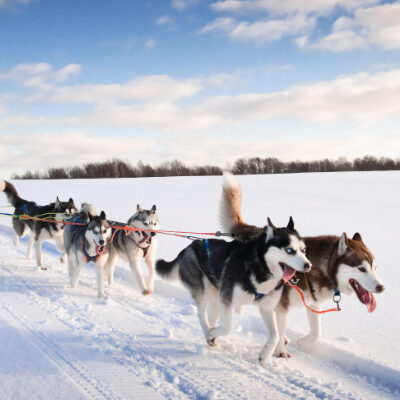The Milford Hunt represents a captivating tradition that has flourished over the years enchanting enthusiasts with its blend of heritage sportsmanship and community spirit. At its core, this is more than just a pursuit. It is a celebration of the rich tapestry of rural life embodying a deep connection with nature. And the enduring bonds between riders, hounds, and the countryside. This exploration delves into the essence of the Milford offering insights into its history cultural significance. The unwavering passion of those who participate in and support this venerable activity.

History and Evolution
Tracing back to centuries past the origins of the Milford Hunt are steeped in the mists of time evolving from a necessary form of wildlife management into a revered tradition. Initially, hunting served as a means to control animal populations and protect livestock. But it gradually transformed into a sport that emphasized skill strategy and harmony with the natural world. The Milford Hunt has adapted through the ages reflecting societal changes and incorporating modern perspectives on conservation and ethical engagement with the environment. This evolution underscores its resilience and relevance marking it as a living heritage that continues to captivate and inspire.
Cultural Significance
Beyond the thrill of the chase this embodies a profound cultural significance weaving together the threads of community tradition and respect for nature. It serves as a vibrant focal point for social gatherings, strengthening ties between participants and spectators alike. The rituals and ceremonies associated with the Milford Hunt from the call of the horn to the elegance of the attire enrich. The cultural tapestry of the region celebrating a legacy that transcends generations. This enduring allure underscores the hunt role in fostering a sense of identity and continuity within the community.
Ethical and Conservation Aspects
In contemporary discourse the Milford Hunt stands at the intersection of tradition and modern ethical considerations. It has adapted to reflect a heightened awareness of wildlife conservation. The animal welfare with many hunts now following artificially laid trails. To preserve the spirit of the chase while ensuring the safety of all creatures involved. This approach highlights a commitment to stewardship of the land and its inhabitants. Balancing the excitement of the hunt with a deep-seated respect for the natural world. Such practices exemplify how it continues to evolve embracing sustainability and ethical responsibility.
Role of Community and Tradition
It thrives on the strength of its community, drawing together individuals from all walks of life with a shared passion for equestrian excellence and outdoor adventure. This communal aspect fosters a unique camaraderie with seasoned hunters mentoring newcomers and generations of families participating together. The traditions upheld within the Milford Hunt from the meticulous care of the hounds. To the post-hunt gatherings serve as a living bridge connecting past. And present while nurturing a sense of belonging and mutual respect among all involved.
Challenges and Future
As with any tradition the Milford Hunt faces its share of challenges from environmental concerns to shifting societal attitudes towards hunting. Yet it also possesses a remarkable capacity for adaptation and innovation. By embracing sustainable practices and engaging with broader communities. This poised to continue its legacy into the future. This resilience coupled with a commitment to ethical stewardship and community engagement. It suggests a vibrant path forward where tradition and modernity converge in celebration of heritage and the natural world.
Global Perspective
While the Milford Hunt is deeply rooted in specific local traditions it also resonates with global narratives of hunting and equestrian culture. Around the world, similar practices reflect diverse approaches to hunting conservation. And community, offering opportunities for cross-cultural exchange and mutual learning. It stands as part of a global tapestry highlighting the universal human connection to nature the thrill of the chase. And the enduring value of heritage and tradition.
Conclusion
The Milford Hunt captivates with its blend of traditional community. And respect for the natural world embodying a rich cultural heritage that continues to evolve. As it navigates the challenges of the modern world the Milford Chase remains a testament . To the enduring appeal of this timeless tradition inspiring future generations to uphold the values of sportsmanship conservation, and camaraderie. In the heart of the countryside the spirit of the Milford Hunt thrives a vibrant celebration of history nature, and the bonds that unite us.
FAQs
How has the Milford Hunt adapted to modern ethical standards?
In recent years the Milford Hunt has adapted by focusing on trial hunting. To ensure the welfare of all animals involved incorporating wildlife conservation principles, and engaging with the community on environmental stewardship.
What role does community play in the Milford Hunt?
Community is central to the Milford Hunt fostering camaraderie among participants supporting local traditions. It providing opportunities for social gatherings and intergenerational learning.
Can anyone participate in the Milford Hunt?
Participation in the Milford Hunt is open to those with an interest in equestrian activities and a respect for its traditions and ethical standards. However, some level of skill and knowledge about horse riding and hunting is beneficial.
What happens during a Milford Hunt event?
A Milford Hunt event typically involves riders and hounds setting out to follow a pre-laid trail with participants dressed in traditional hunting attire followed by social gatherings that celebrate the day events.
How does the Milford Hunt contribute to wildlife conservation?
The Milford Hunt contributes to wildlife conservation through practices like trail hunting habitat preservation efforts and by educating participants and the public about the importance of maintaining biodiversity.




